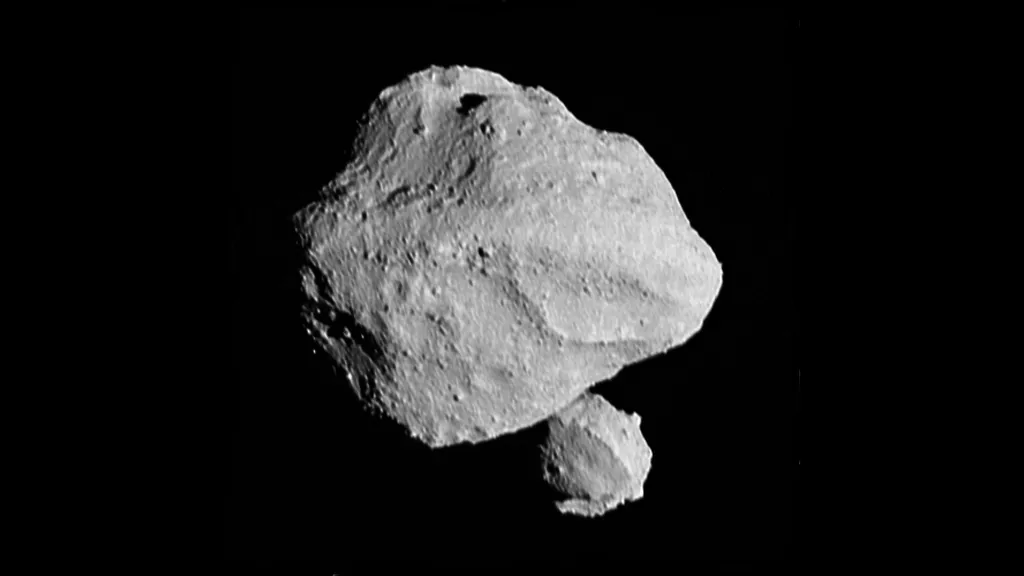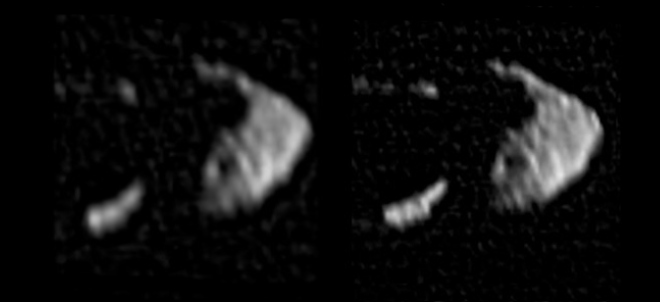When NASA's Lucy mission flew past the asteroid Dinkinesh on Nov. 1, 2023, it discovered an unexpected companion: a pair of fused moons that scientists named Selam.
Now, researchers have proposed a model explaining how Selam may have formed.
Astronomers supervising Lucy ― a car-sized spacecraft that launched on Oct. 16, 2021 ― had primarily intended to study Jupiter's Trojan asteroids, two swarms of space rocks that lead and lag behind the gas giant as it careens around the sun.
However, in January 2023, they added the diminutive main-belt asteroid Dinkinesh — affectionately called "Dinky" — to the spacecraft's travel itinerary as its first destination.
Source
Now, researchers have proposed a model explaining how Selam may have formed.
Astronomers supervising Lucy ― a car-sized spacecraft that launched on Oct. 16, 2021 ― had primarily intended to study Jupiter's Trojan asteroids, two swarms of space rocks that lead and lag behind the gas giant as it careens around the sun.
However, in January 2023, they added the diminutive main-belt asteroid Dinkinesh — affectionately called "Dinky" — to the spacecraft's travel itinerary as its first destination.
Source























